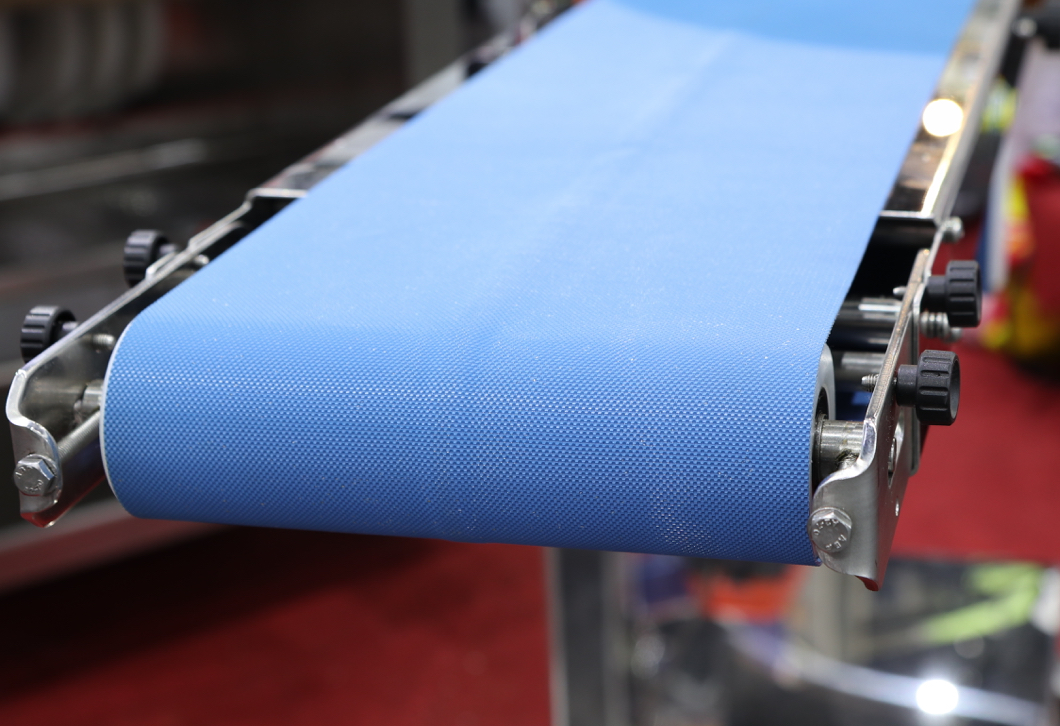What types of conveyor belt pulleys does MIR provide?
MIR supplies both traditional conveyor belt pulleys as well as motorized drive pulleys. Traditional pulley systems consist of a multi-part apparatus of chain, sprockets, gear boxes and a motor that drives the pulley, which then moves the conveyor belt. These conventional pulleys are tension driven and require expert installation to verify they will function under high-speed, high-stress conditions. Motorized pulley systems consist of a motor sealed and protected inside an outer metal drum. Inside the drum, the motor is electrically driven and oil-lubricated. The outer drum serves as a traction pulley, driving the conveyor belt forward.
Both standard and motorized conveyor belt pulleys come in a variety of configurations for a variety of applications. For your conveyor system, MIR can provide:
- Drive / head pulleys
- Idler pulleys
- Return / tail pulleys
- Snub pulleys
- Take-up pulleys
- Bend pulleys
- Wing-style pulleys
- Spiral-style pulleys
- Angled-wing pulleys
Our strong partnerships with pulley manufacturers and providers — we are a certified Van der Graaf repair center — allow us to act as a full-service partner for your conveyor belting needs. By providing all elements of your conveyor system, our engineering ensures each component fits integrally into the application line’s performance expectations.
The MIR Belting Audit™ Request
Get a line-by-line itemization of potential ROI for each improvement — at no cost to your facility.
Get startedAdvantages of a motorized pulley system
Motorized pulley systems, also known as drum motor pulleys, offer many advantages for conveyor systems across industries.
Unmatched durability
Drum motor pulleys require maintenance only after approximately 50,000 hours of operation. After that interval, the maintenance team only needs to change out the oil inside the drum motor. This leads to a reduction in downtime and operating costs while increasing durability and throughput.
Advanced safety and sanitation
There are no external moving parts (motors, gear boxes, chains) on drive pulleys and the motor is entirely self-contained. This greatly reduces safety risks for plant workers, and food contamination from oil leaks or broken components is much less of a concern. This is especially desirable in Food Processing facilities.
Reduced energy costs
Due to parallel gearing design, motorized drive pulleys offer up to 96% efficiency, compared to 75% efficiency on conventional pulley systems. This can produce up to a 30% reduction in energy costs for the production line, positively affecting a facility’s bottom line.
Improved versatility and space utilization
Facility managers can adapt drive-style pulleys to function not just as drive pulleys, but as applications that increase reliability and throughput on production lines. Additionally, the lack of component parts allows for increased space utilization on facility floors.
Significant noise reduction
Motorized drive pulleys are manufactured with machine-ground, case-hardened steel. This, combined with the precision integration of the gears and the self-contained motor environment, eliminates extraneous noise factors.
Advantages of conventional pulley systems
Conventional pulley systems also function well for many applications and offer longevity and durability for conveyor belt systems. As these pulley systems are component-based, motor, gear and chain parts can be stocked and utilized for different pulleys across the plant — making for efficient back stocking, easy replacement and minimized downtime.
Pulley customization and accessories
A conveyor belt pulley functions at its best when it’s customized to the application. MIR specializes in coatings, a vital component of pulley customization. Coatings provide the necessary coefficient of friction between the belt contact surface and the pulley so the system is driven efficiently. Durometer-tested coatings with specialized textures, temperature allowances and pulley sizing all play a key role in a highly functioning pulley system. Here are additional customization options MIR can manufacture, install or produce for conveyor belt pulleys:
- Pulley face profile (flat, crowned, trapezoidal, radial, parabolic)
- Hub connection
- Pulley diameter
- Face length of pulley
- Lagging, coating or coverings, including brush / bristle designs
- Specified sprocket design to accommodate plastic modular belting
- External sprockets for slave driving or tandem applications
- Junction boxes or direct wire lead for the power source
- Insulation options for non-belt applications
- Klixon overload protection devices
- In-line frequency inverters for variable speed control
- Dual voltage options
- Back or break stops
- Electro magnetic brakes
Conveyor accessories for pulley systems are also important, and MIR provides these for plants as well. Supplemental pulley parts such as belt scrubbers, scrapers, take-ups, troughing idlers and belt trackers are all available through MIR. Click here for our full conveyor part and accessory capabilities.
Considerations for pulley systems
For plants running motorized pulley systems, a drum motor typically requires minimal maintenance. But in the rare event that it breaks down, the entire mechanism must be replaced. While your conveyor belting service provider facilitates the motor’s repair, it is good practice to have a spare on site, minimizing production downtime.
The maintenance of lubricating chains and greasing bearings, wear parts and components on a standard pulley system can consume a facility’s maintenance time. For these systems, facility managers should ensure spare parts are kept on hand in case of breakdowns and keep a conveyor belting service provider on call for break-fix service.
A belting audit will verify your plant is running a best-fit pulley system, offer solutions for pain points and provide a line-by-line itemization of potential ROI for each improvement — at no cost to your facility. Sign up for the MIR Belting Audit™.
 View Locations
View Locations 24/7 Service: 877-MIR-BELT (877-647-2358)
24/7 Service: 877-MIR-BELT (877-647-2358)





 Intro
Intro
